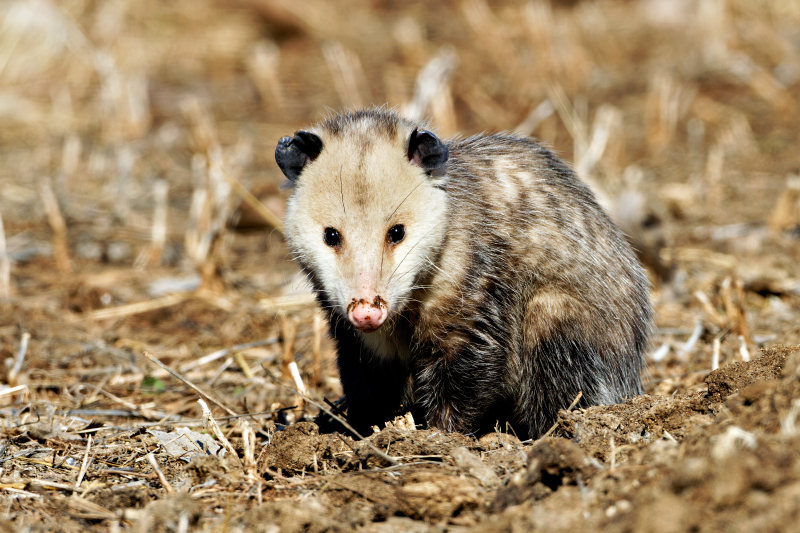In the heart of Oklahoma’s Sequoyah National Wildlife Refuge, nature never fails to amaze. On February 12, 2014, I had the privilege of photographing an opossum diligently digging through a pile of fertilizer in an old cornfield. This remarkable encounter highlighted the adaptability of wildlife and provided a rewarding experience in my journey as a wildlife photographer.

The Scene: Wildlife Photography in Fertilized Fields
The cornfield, scattered with fertilizer likely containing chicken litter—evident from the white feathers mixed in—was a magnet for wildlife. Farmers often spread fertilizer in February or March to enrich the soil, and this practice naturally attracts animals searching for food or exploring the area. In the past, I had photographed coyotes drawn to similar fields, so I eagerly anticipated what might appear this time.
My patience was rewarded when an opossum emerged. Undeterred by my presence, it dug through the pile with determination, pausing occasionally to glance in my direction before resuming its task. Observing this persistent creature up close was both fascinating and humbling.
Understanding Opossums: Unique Wildlife Subjects
Opossums are unique and resilient creatures native to the Americas. With their pointed snouts, gray fur, and hairless prehensile tails, they are unmistakable. Skilled climbers and opportunistic feeders, they thrive in diverse environments ranging from dense forests to urban neighborhoods.
The opossum’s behavior that day was a testament to its resourcefulness and adaptability. It reminded me of the intricate balance of nature and the perseverance of wildlife in the face of changing environments.
Opossum Photography: Equipment and Techniques
Photographing the opossum required preparation and the right equipment. For this shot, I used my Canon EOS 7D camera paired with a Canon EF500mm f/4L IS USM lens. My setup included a bean bag draped over my pickup’s open window for stability. The camera settings were:
- Mode: AV (Aperture Priority)
- Aperture: f/8.0
- ISO: 320
- Shutter Speed: 1/1250 sec
- Exposure Bias: -2/3 EV
- Focal Length: 500mm
These settings ensured sharp detail and clarity, allowing me to capture the opossum’s activity and its surroundings in vivid detail.
Reflections on Photographing Wildlife Encounters
As a wildlife photographer, moments like these are what fuel my passion. They offer a rare glimpse into the lives of creatures that often go unnoticed. The opossum’s diligent search through the fertilizer was a vivid reminder of nature’s beauty and resilience.
Sequoyah National Wildlife Refuge remains a constant source of inspiration and discovery. Whether it’s coyotes, opossums, or other wildlife, each visit adds a new chapter to my story of connecting with nature. Wildlife photography allows us to share these experiences and inspire others to appreciate the incredible diversity of life around us.
I’m grateful for this opportunity and hope it encourages others to explore the wonders of the natural world.
Have you ever had a unique wildlife encounter? Share your story in the comments below!
